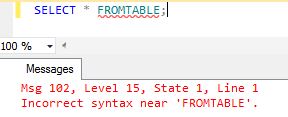Multi Server Query
In SQL Server Management Studio, it is possible to execute a multi server query against several servers at the same time. The description from TechNet says most of it:
This topic describes how to query multiple servers at the same time in SQL Server 2012, by creating a local server group, or a Central Management Server and one or more server groups, and one or more registered servers within the groups, and then querying the complete group. The results that are returned by the query can be combined into a single results pane, or can be returned in separate results panes. The results set can include additional columns for the server name and the login that is used by the query on each server. Central Management Servers and subordinate servers can be registered by using only Windows Authentication. Servers in local server groups can be registered by using Windows Authentication or SQL Server Authentication.
Here I’ll show how to create a multi server query from a group under registered servers.

